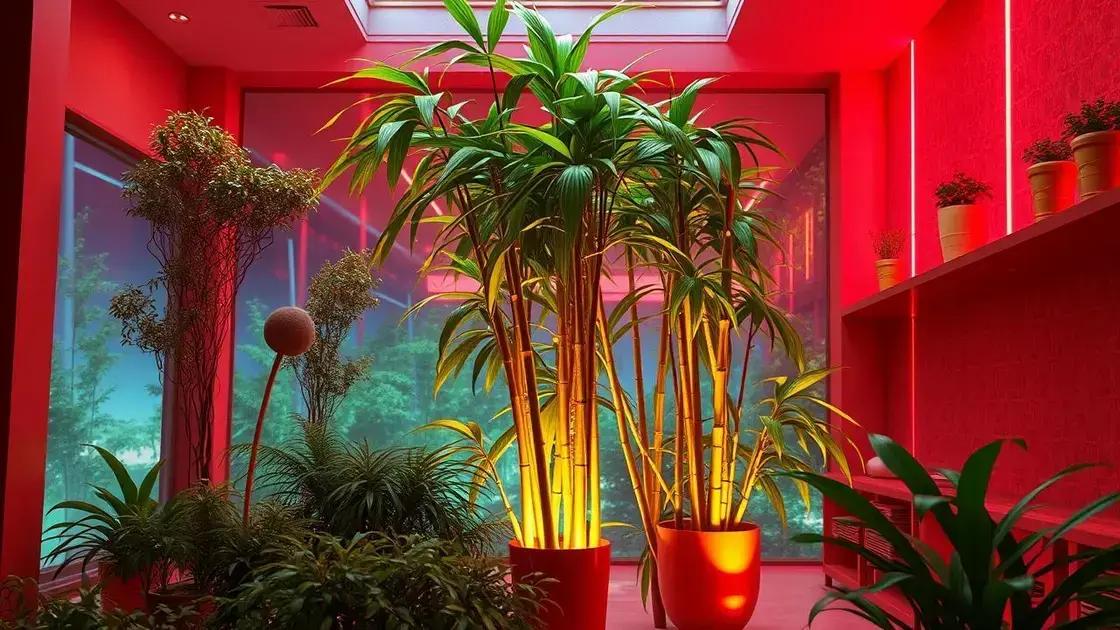How to Take Care of a Bamboo House Plant: 5 Expert Tips for Lush Growth
How to take care of a bamboo house plant may seem overwhelming, but with the right knowledge, your plant can thrive effortlessly. As we dive into essential tips and practices, discover how simple adjustments can lead to vibrant, lush bamboo that enhances your living space.
Table of Contents
ToggleOptimal sunlight exposure for bamboo house plants
Optimal sunlight exposure for bamboo house plants is crucial for their growth and health. These plants thrive best in bright, indirect light, making it essential to position them correctly in your home. Here are some key points to consider:
- Direct sunlight: Bamboo can tolerate brief exposure to direct sunlight, but prolonged periods can scorch their leaves.
- Indirect light: Aim to place your bamboo house plant near a window where it will receive filtered light. South or east-facing windows are ideal.
- Low light conditions: Bamboo plants are adaptable; however, too little light can lead to slow growth and leggy appearances.
To enhance your plant’s experience, you can rotate it occasionally for even light exposure. This practice helps maintain its shape and encourages uniform growth.
Signs of inadequate sunlight
- Yellowing leaves
- Stunted growth
- Legginess
If you notice these signs, consider moving your plant to a brighter location or supplementing with grow lights. Exploring indoor gardening techniques can also provide additional insights for optimal plant care.
For maintaining the right balance of light, follow this simple guide:
- Place your bamboo plant near a window that provides bright, indirect sunlight.
- Rotate the pot every two weeks for even light distribution.
- Evaluate the plant monthly for signs of distress related to light.
By understanding the necessary light conditions for your bamboo house plant, you’ll be on your way to cultivating a vibrant and healthy indoor garden.
Essential watering schedule for bamboo plants

Essential watering schedule for bamboo plants is a vital component of their care. Understanding when and how to water your bamboo effectively ensures it remains healthy and vibrant. Here’s what you need to keep in mind:
- Frequency: Bamboo plants generally require watering every 1-2 weeks, depending on the humidity and temperature.
- Soil moisture: Always check the top inch of soil; if dry, it’s time to water.
- Water quality: Use room temperature, filtered or distilled water to avoid chemicals found in tap water.
It’s important to avoid overwatering, as this can lead to root rot. Instead, aim for a consistent watering routine that reflects the plant’s needs.
Signs of proper watering
- Lush and dark green leaves
- Strong upright stems
- Healthy root growth in drainage holes
To create an effective watering schedule, follow these steps:
- Check the soil moisture once a week by sticking your finger into the soil.
- If the soil feels dry an inch down, water thoroughly until excess drains from the bottom.
- Adjust the frequency based on seasonal changes; during hotter months, you might need to water more often.
For additional tips on maintaining your bamboo house plant, consider exploring indoor gardening techniques to broaden your knowledge.
By establishing a proper watering routine, your bamboo plants will thrive and become stunning focal points in your indoor garden.
Soil requirements and fertilizer tips for bamboo growth
Soil requirements and fertilizer tips for bamboo growth are essential for maintaining a healthy indoor plant. Proper soil choice and the right fertilizers contribute to vibrant, thriving bamboo. Here’s what you need to know:
- Soil type: Bamboo prefers well-draining, nutrient-rich soil. A mix of potting soil, peat moss, and perlite works well.
- pH level: Aim for a slightly acidic to neutral pH (6.0 to 7.0) to promote optimal growth.
- Drainage: Ensure your pot has drainage holes to prevent water retention, which can lead to root rot.
Using the right soil mix is only part of the equation; appropriate fertilization enhances your plant’s growth potential.
Fertilizer tips for bamboo
- Frequency: Fertilize your bamboo every 4-6 weeks during the growing season (spring and summer).
- Type: Use a balanced, water-soluble fertilizer with equal ratios of nitrogen, phosphorus, and potassium (NPK). Look for a product labeled 10-10-10.
- Application: Dilute the fertilizer as per the package instructions, and apply it evenly to the soil during watering.
To establish an effective routine, consider these steps:
- Test the soil pH before planting to ensure optimal conditions.
- Mix in organic compost to enrich the soil at the start.
- Monitor for signs of nutrient deficiency, such as yellowing leaves.
For further insights on nurturing your bamboo plant, check out exploring indoor gardening techniques to elevate your plant care regimen.
By adhering to the right soil and fertilizer practices, you can enjoy a robust, healthy bamboo plant that enhances your space.
In conclusion
Caring for a bamboo house plant is a rewarding experience that enriches your indoor environment. By understanding the essentials of sunlight exposure, establishing an effective watering schedule, and adhering to the right soil and fertilizer requirements, you can ensure your bamboo thrives beautifully. Remember to observe your plant regularly for signs of stress and adjust your care routine as necessary. For further insights and tips on enhancing your indoor garden, keep exploring the exciting world of indoor gardening!

